Mehrdad Rostami
Classification of 24-hour movement behaviors from wrist-worn accelerometer data: from handcrafted features to deep learning techniques
Sep 10, 2025Abstract:Purpose: We compared the performance of deep learning (DL) and classical machine learning (ML) algorithms for the classification of 24-hour movement behavior into sleep, sedentary, light intensity physical activity (LPA), and moderate-to-vigorous intensity physical activity (MVPA). Methods: Open-access data from 151 adults wearing a wrist-worn accelerometer (Axivity-AX3) was used. Participants were randomly divided into training, validation, and test sets (121, 15, and 15 participants each). Raw acceleration signals were segmented into non-overlapping 10-second windows, and then a total of 104 handcrafted features were extracted. Four DL algorithms-Long Short-Term Memory (LSTM), Bidirectional Long Short-Term Memory (BiLSTM), Gated Recurrent Units (GRU), and One-Dimensional Convolutional Neural Network (1D-CNN)-were trained using raw acceleration signals and with handcrafted features extracted from these signals to predict 24-hour movement behavior categories. The handcrafted features were also used to train classical ML algorithms, namely Random Forest (RF), Support Vector Machine (SVM), Extreme Gradient Boosting (XGBoost), Logistic Regression (LR), Artificial Neural Network (ANN), and Decision Tree (DT) for classifying 24-hour movement behavior intensities. Results: LSTM, BiLSTM, and GRU showed an overall accuracy of approximately 85% when trained with raw acceleration signals, and 1D-CNN an overall accuracy of approximately 80%. When trained on handcrafted features, the overall accuracy for both DL and classical ML algorithms ranged from 70% to 81%. Overall, there was a higher confusion in classification of MVPA and LPA, compared to sleep and sedentary categories. Conclusion: DL methods with raw acceleration signals had only slightly better performance in predicting 24-hour movement behavior intensities, compared to when DL and classical ML were trained with handcrafted features.
Presentation a Trust Walker for rating prediction in Recommender System with Biased Random Walk: Effects of H-index Centrality, Similarity in Items and Friends
Sep 10, 2020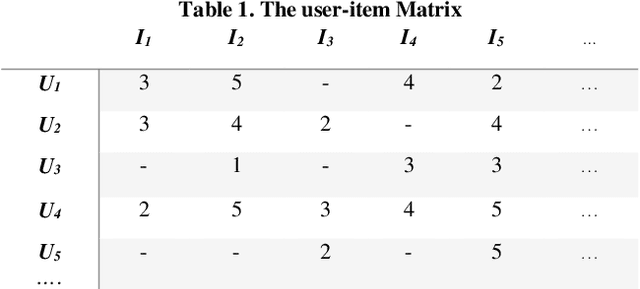

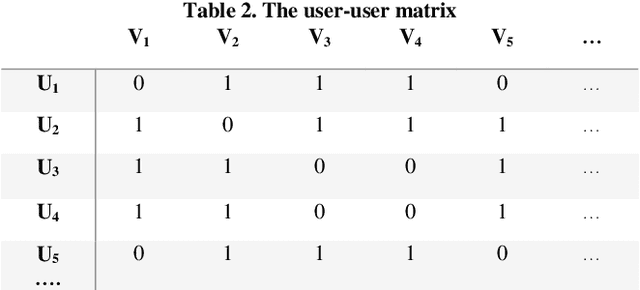
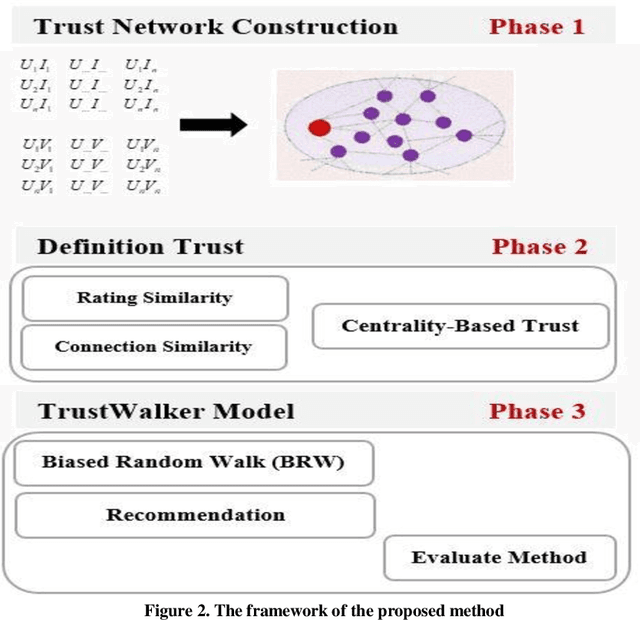
Abstract:The use of recommender systems has increased dramatically to assist online social network users in the decision-making process and selecting appropriate items. On the other hand, due to many different items, users cannot score a wide range of them, and usually, there is a scattering problem for the matrix created for users. To solve the problem, the trust-based recommender systems are applied to predict the score of the desired item for the user. Various criteria have been considered to define trust, and the degree of trust between users is usually calculated based on these criteria. In this regard, it is impossible to obtain the degree of trust for all users because of the large number of them in social networks. Also, for this problem, researchers use different modes of the Random Walk algorithm to randomly visit some users, study their behavior, and gain the degree of trust between them. In the present study, a trust-based recommender system is presented that predicts the score of items that the target user has not rated, and if the item is not found, it offers the user the items dependent on that item that are also part of the user's interests. In a trusted network, by weighting the edges between the nodes, the degree of trust is determined, and a TrustWalker is developed, which uses the Biased Random Walk (BRW) algorithm to move between the nodes. The weight of the edges is effective in the selection of random steps. The implementation and evaluation of the present research method have been carried out on three datasets named Epinions, Flixster, and FilmTrust; the results reveal the high efficiency of the proposed method.
A Novel Community Detection Based Genetic Algorithm for Feature Selection
Aug 08, 2020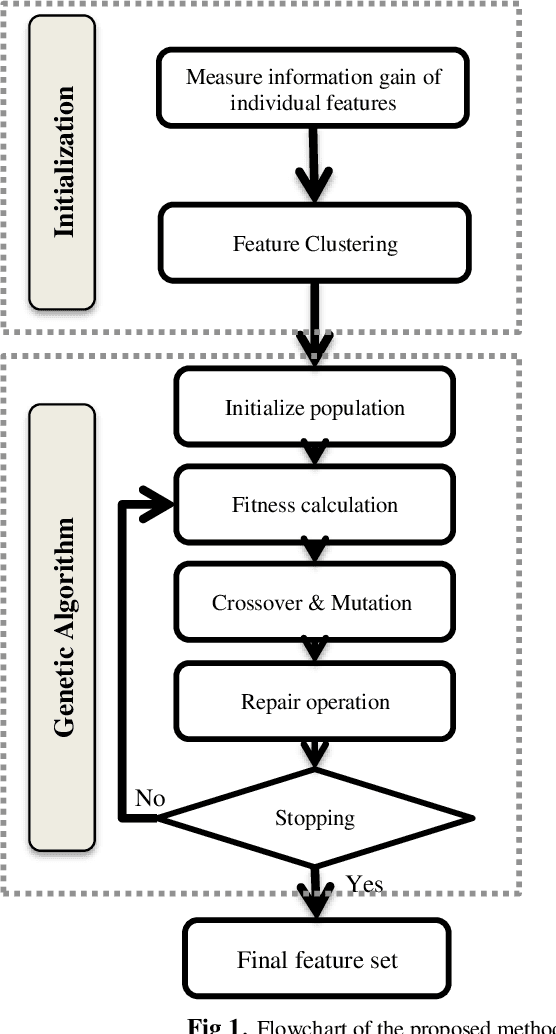

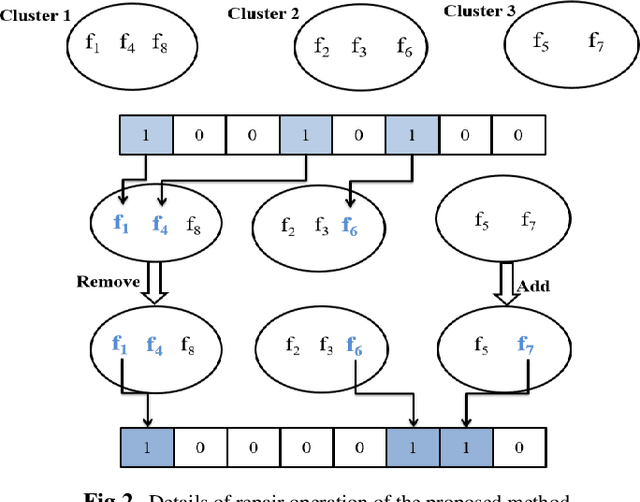
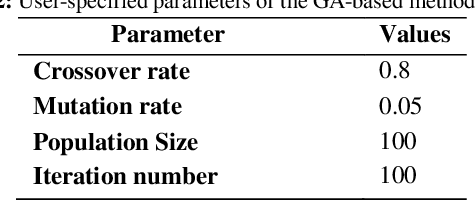
Abstract:The selection of features is an essential data preprocessing stage in data mining. The core principle of feature selection seems to be to pick a subset of possible features by excluding features with almost no predictive information as well as highly associated redundant features. In the past several years, a variety of meta-heuristic methods were introduced to eliminate redundant and irrelevant features as much as possible from high-dimensional datasets. Among the main disadvantages of present meta-heuristic based approaches is that they are often neglecting the correlation between a set of selected features. In this article, for the purpose of feature selection, the authors propose a genetic algorithm based on community detection, which functions in three steps. The feature similarities are calculated in the first step. The features are classified by community detection algorithms into clusters throughout the second step. In the third step, features are picked by a genetic algorithm with a new community-based repair operation. Nine benchmark classification problems were analyzed in terms of the performance of the presented approach. Also, the authors have compared the efficiency of the proposed approach with the findings from four available algorithms for feature selection. The findings indicate that the new approach continuously yields improved classification accuracy.
Review of Swarm Intelligence-based Feature Selection Methods
Aug 07, 2020
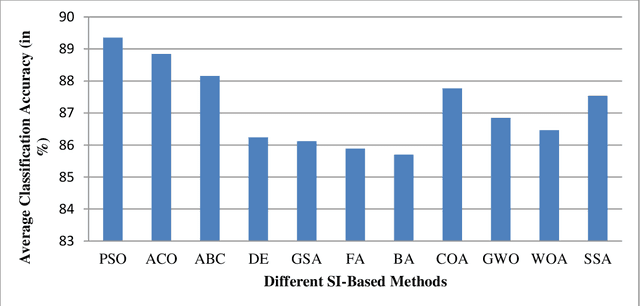
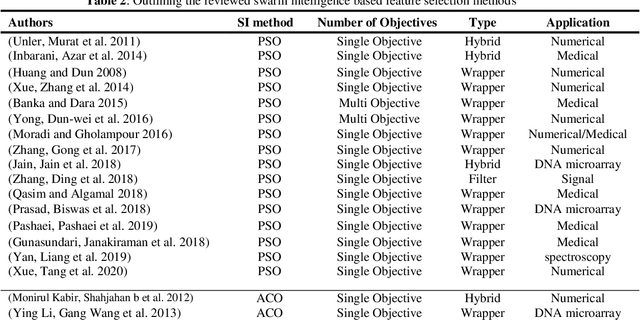

Abstract:In the past decades, the rapid growth of computer and database technologies has led to the rapid growth of large-scale datasets. On the other hand, data mining applications with high dimensional datasets that require high speed and accuracy are rapidly increasing. An important issue with these applications is the curse of dimensionality, where the number of features is much higher than the number of patterns. One of the dimensionality reduction approaches is feature selection that can increase the accuracy of the data mining task and reduce its computational complexity. The feature selection method aims at selecting a subset of features with the lowest inner similarity and highest relevancy to the target class. It reduces the dimensionality of the data by eliminating irrelevant, redundant, or noisy data. In this paper, a comparative analysis of different feature selection methods is presented, and a general categorization of these methods is performed. Moreover, in this paper, state-of-the-art swarm intelligence are studied, and the recent feature selection methods based on these algorithms are reviewed. Furthermore, the strengths and weaknesses of the different studied swarm intelligence-based feature selection methods are evaluated.
Presentation of a Recommender System with Ensemble Learning and Graph Embedding: A Case on MovieLens
Jul 15, 2020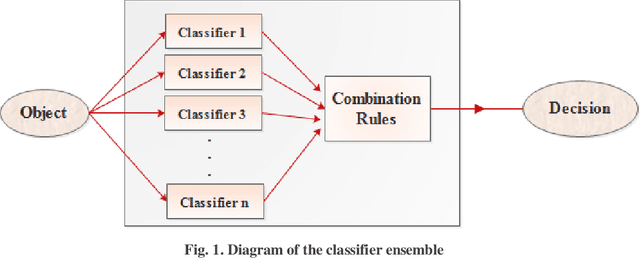


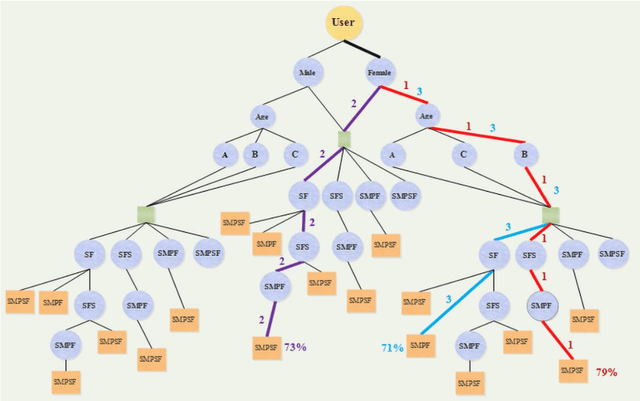
Abstract:Information technology has spread widely, and extraordinarily large amounts of data have been made accessible to users, which has made it challenging to select data that are in accordance with user needs. For the resolution of the above issue, recommender systems have emerged, which much help users go through the process of decision-making and selecting relevant data. A recommender system predicts users behavior to be capable of detecting their interests and needs, and it often uses the classification technique for this purpose. It may not be sufficiently accurate to employ individual classification, where not all cases can be examined, which makes the method inappropriate to specific problems. In this research, group classification and the ensemble learning technique were used for increasing prediction accuracy in recommender systems. Another issue that is raised here concerns user analysis. Given the large size of the data and a large number of users, the process of user needs analysis and prediction (using a graph in most cases, representing the relations between users and their selected items) is complicated and cumbersome in recommender systems. Graph embedding was also proposed for resolution of this issue, where all or part of user behavior can be simulated through the generation of several vectors, resolving the problem of user behavior analysis to a large extent while maintaining high efficiency. In this research, individuals most similar to the target user were classified using ensemble learning, fuzzy rules, and the decision tree, and relevant recommendations were then made to each user with a heterogeneous knowledge graph and embedding vectors. This study was performed on the MovieLens datasets, and the obtained results indicated the high efficiency of the presented method.
 Add to Chrome
Add to Chrome Add to Firefox
Add to Firefox Add to Edge
Add to Edge